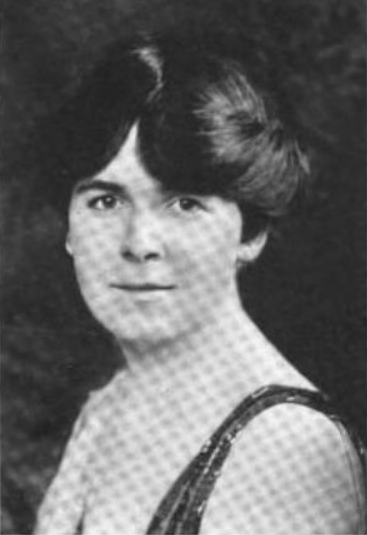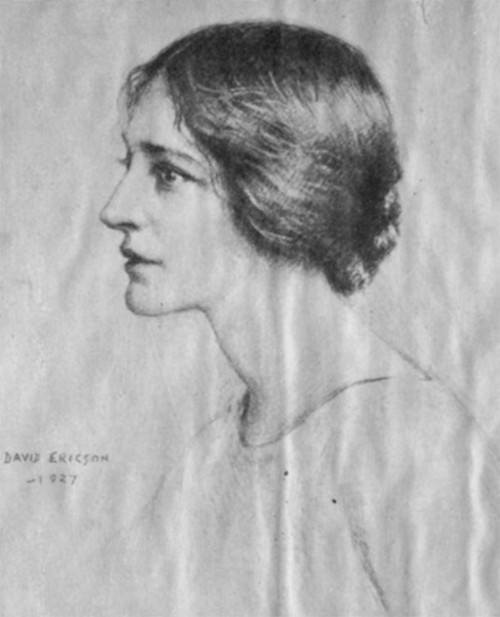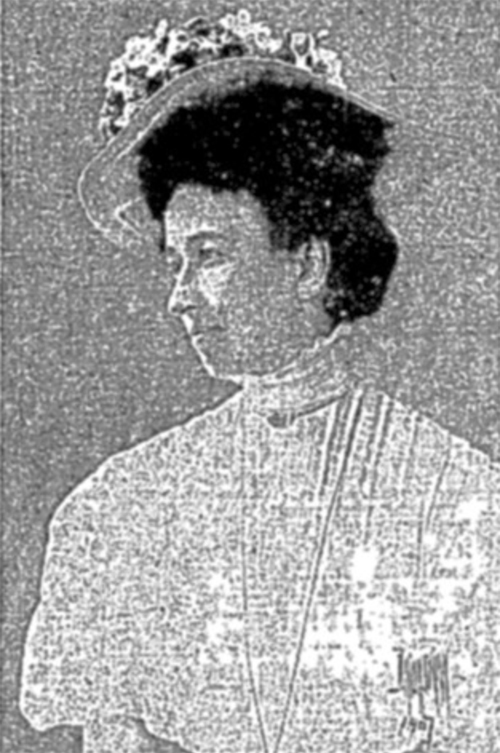For the month of March to celebrate Women’s History month, we are featuring Duluth women who have had an impact on Duluth’s history. This is by no means an exhaustive list! Five names are just easier to remember than 25 names.
Featured designs by Student Graphic Designer, Grace Kazak.

MARGARET CULKIN BANNING
Margaret Culkin (christened Marguerite by a French priest) was born on March 18, 1891, in Buffalo, Minnesota. Her parents were William Edgar Culkin and Hannah Alice (Young) Culkin. William was an attorney who served three terms as county attorney of Wright County and one term as a state senator from the 38th district. In 1897, he was appointed by President McKinley to the post of Register of the Land Office in Duluth, and the family moved north.
Margaret lived in Duluth from the age of six. She attended public schools and graduated from Duluth Central High School in 1907. After graduation, her parents, thinking she was suffering from consumption, (Tuberculosis) sent her to Rochester, New York, where William’s brother, a physician, lived. There she lived in the Convent of the Sacred Heart for a year.
Next, she was off to Poughkeepsie, New York, where she attended Vassar College, (also where Helen Congdon attended college) studying economics and creative writing. After graduating from Vassar, she studied at the University of Chicago and received a master’s degree in settlement work, an early term for social work.
She returned to Duluth and in the fall of 1913 began work as director of the Duluth Social Center, a popular program that used schools as community gathering places for lectures, physical activities, and entertainment.
Always interested in writing, Margaret published her first novel, This Marrying, in 1920. She followed that up by publishing a new book about every year into the middle 1940s. The last of her more than forty books, Such Interesting People, was published in 1979.
She also published hundreds of short stories and essays in magazines such as Ladies Home Journal, Harper’s, Woman’s Home Companion, and Saturday Evening Post. She often wrote on controversial topics for the times, such as birth control, working women, and mixed marriage.
In addition to her writing career, Margaret was very active in the community, serving for many years on the Duluth Library Board and working on local projects. She became an activist for national causes and was busy with speaking engagements around the country. She also had a weekly radio program on NBC in the early 1940s. She was an active member of the Republican Party. In 1935, she was selected as the first member of the Duluth Hall of Fame.
On November 15, 1944, Margaret married LeRoy Salsich, president of the Oliver Mining Co., in New York City. They resided at 60 East Kent Road in Duluth. He died on October 26, 1957. On May 21, 1969, Duluth celebrated “Margaret Culkin Banning Day” to honor her on the publication of her book, Mesabi. Margaret continued to write for the rest of her life. She died on January 4, 1982, in Tryon, North Carolina, at the age of 90.
Information is sourced from Zenith City Online.

Ann Weston
Anne Van Derlip Weston was born in 1861 in New York City. Her life is particularly interesting, partly because of her mysterious origins—she was an orphan who never knew her parents—and partly because of the particularly cultured upbringing she was privileged to receive by her adoptive parents George and Grace Van Derlip of New York City.
Mr. Van Derlip was an avid art collector and patron of American artists. He was said to have one of the finest collections of American art in New York at the time, evidenced by 21 paintings from it having been exhibited at the National Academy of Design between 1861 and 1886. Her father was also involved in the formation of the Metropolitan Museum of Art and later became a trustee of that institution. Weston’s early exposure to the works of fine artists, along with her schooling at Rutgers Female College, a private school in New York City that stressed the classics, languages, and the arts, cultivated what must have been a natural talent.
At age 26 Anne Van Derlip married Dr. John Burroughs Weston of Chester, Pennsylvania and soon after left her career at Tiffany Glass Company. Dr. Weston determined to set up his practice in the growing city of Duluth and the newlyweds moved here for what was to be a 25-year tenure. The family was living in their new house at 2130 East Superior Street by 1891, having moved from their first home at 114 East Fourth Street.
The new house included a transom window designed by Weston for the dining room which looked out over Lake Superior. By 1900 they had a full household with three daughters and a son ranging in age from eleven to five, plus a nephew and one servant.
Weston not only designed her most elegant and original works while living in Duluth, and became the city’s connection to Tiffany, but taught art as well. It is primarily due to her that so many beautiful works in glass made their way into Duluth’s homes, churches, and public buildings. Weston’s masterpiece is her “Minnehaha Window” (now on permanent display at the St. Louis County Heritage and Arts Center—“The Depot”) of 1892-93 commissioned for the World’s Columbian Exposition.
Candace Wheeler, one of Tiffany’s partners in Associated Artists, was the director of the Women’s Building for the exposition and she was largely responsible for the prominence of women artists at the fair. Designs by some of these women–Agnes Northrop, Mary Tillinghast, and Lydia Emmet, most notably–were published – along with a design by Anne Weston–in the book, Art and Handicraft in the Woman’s Building of the World’s Columbian Exposition, Chicago, 1893.
In 1913, Weston left Duluth with her family to move to southern California as a result of her husband’s failing health, settling in Hemet, a small town in the San Bernardino Valley. Weston died on 8 September 1944, at the age of eighty-three.
The preceding biography was prepared by Jill Larson as part of the Intensive Survey of Historic Resources in Duluth’s East End (Part 1), commissioned by the Duluth Heritage Preservation Commission and published August 2007.
Information is sourced from Zenith City Online.

Frances “Fran” Skinner
Duluth’s Frances Skinner Apartments at 102 East First Street were named for social activist Frances “Fran” Skinner, a native of Topeka, Kansas, who was born in 1918. She earned her teaching degree at Eastern Michigan University and master’s from the Universities of Michigan and Minnesota.
Skinner began her career in social work in the Twin Cities in 1941; ten years later, her work brought her to Duluth as the executive director of the International Institute. After a ten-year tenure, Skinner left the institute to teach sociology at the University of Minnesota Duluth, where she helped develop the School of Social Development.
She retired from UMD in 1979 to serve as the president of the Duluth Community Action Board. She was widely involved in Duluth, displaying a lifetime of concern for her community, particularly where low-income housing was concerned. She belonged to the Low Income Housing Consortium, Northern Community Land Trust Fund, the Minnesota Housing Trust Fund Advisory Board, and served as president of the North East Minnesota Housing Partnership and the Duluth Housing Trust Fund.
In 1990 Skinner’s life in social work was recognized by Governor Rudy Perpich who presented her with an economic and social justice award. It is only fitting then, that when the Toverilla Hotel (b. 1917) was converted into low-income apartments, the building was renamed to honor Skinner.
Fran Skinner was also involved in other aspects of life in Duluth. She volunteered at the Peace Center and became involved in the John Beargrease sled dog race. She coordinated the International Folk Festival, which was held annually at Leif Erikson Park, for ten years. She lived on Minnesota Point and belonged to the Park Point Community Club.
Skinner has been honored by Duluth’s Whole Foods Co-op through the Fran Skinner Matching Memorial Fund. Skinner helped establish the co-op back in 1970, serving on its board, managing the business from 1974 to 1988, and pitching in on inventory up until her death on February 6, 1994. She was seventy-six years old. According to her obituary, Miss Skinner left behind a brother in Tennessee and her long-time companion, Jo Goodsell.
In a Duluth News Tribune article about Skinner’s passing in 1994, Duluth Community Action Program Director Catherine Peterson credited Skinner for teaching her “everything she knows” about social work and added that “[Frances] was an incredible woman. She was beloved in our community and dedicated her life to making it better.”
Information is sourced from Zenith City Online Originally published on Zenith City Online (2012–2017).

Clara Stocker
Duluth-native Clara Stocker devoted her life to the study of music, art, and language and traveled the world to gain her knowledge—then returned after each trip to teach what she had learned to the people of Duluth.
Clara grew up in a home filled with music and intellectual pursuits—her mother was a music teacher, composer, and lecturer. Beginning in about 1901 Clara’s mother took her and her brother Arthur on extended trips to New York City and Europe where Stella often lectured and she and the children studied music and languages.
Clara and her mother continued to travel abroad annually to study and lecture; after months in Europe, they would return to Duluth to teach. Clara began teaching piano in her mother’s school about 1906. While in Europe, Clara studied at France’s University of Grenoble and the Sorbonne, and back in the U.S. did graduate work at New York’s Columbia University. In addition to teaching, she performed regularly in Duluth, in recitals, and as part of the Matinee Musicale. In 1914, returning from a winter in Paris, Clara began teaching French conversation as well.
Clara Stocker Stocker had become interested in Finnish art and culture in the 1920s and visited Finland twice, in 1930 and in 1934. She studied the Kalevala and lectured on it in Duluth and around the United States. She met Finnish artist Juho Rissanen and they remained friends for life.
Clara continued to teach and write in Duluth into the 1940s, setting up shop in the Temple Opera Block. She wrote program notes for some Duluth Symphony concerts and reviewed the Symphony and other local musical events for Duluth newspapers. Over the years she composed pieces for the piano, chamber works, choral works, and accompaniments to the Finnish epic the Kalevala, but only two collections were published.
In the early 1950s, Stocker wrote “Biography of a Free Spirit,” the story of Milma Lappala, a Finnish minister who, along with her husband Risto, served Unitarian congregations on the Iron Range in the first half of the twentieth century. The manuscript was never published, but it was used extensively as a source for the chapter on Lappala in Women Who Dared: The History of Finnish American Women (1986).
In her later years, Stocker became interested in the World Federalist Movement, which formed after World War II and advocated the building of global institutions stronger than the United Nations to avoid future wars. Stocker wrote opinion pieces and letters to the editor arguing for the movement.
Stocker left Duluth about 1952 and lived in New York City, Mexico, Florida, and North Carolina. She died in Asheville, North Carolina, on July 7, 1973.
Story by David Ouse. Originally published on Zenith City Online (2012–2017). Information is sourced from Zenith City Online.

Mary Mcfadden
Mary McFadden was an intrepid young woman who made her way to the Zenith City to find success and fame during those heady times, only to disappear from the collective consciousness within a generation.
In 1874, McFadden was born to immigrant Irish parents in New Brunswick, Canada. Tragically, when Mary was seventeen her mother died giving birth to her thirteenth child. As had happened to many other young women of her day, Mary seemingly faced years as a substitute mother to her siblings, yet a year later she enrolled at the University of Minnesota. While the university has no record of her graduating, by 1898 she was a reporter at the Minneapolis Times and had found work as a stenographer at the state capitol building in St. Paul. Contrary to societal expectations, she remained unmarried.
In 1903, now 28, McFadden headed north to become the first full-time female reporter for the Duluth News Tribune. But, upon arriving in Zenith City she was struck down with typhoid, and her career was delayed as she spent months in the hospital flirting with death. Against the odds, she rallied and was released on February 1, 1904.
Her subsequent un-credited reporting on events like the sinking of the Mataafa during the deadly November storm of 1905 was so good that she soon earned a weekly column with a byline, called “Sabbath Diversions.” Its minimizing title belies its wide-ranging impact. The columns were a series of brief comments on the news of the day, interspersed with McFadden’s own and others’ poetry and witty aphorisms. Soon enough, her column went daily, and the title changed to “News and Comment,” becoming slightly more serious in its discussion of politics.
When Colonel Flagg, former editor of the [Duluth News Tribune] died last fall, Miss McFadden was appointed editor, and during one of the most bitter campaigns in the history of the state conducted the editorial department and wrote all the editorial leaders….”
McFadden took advantage of the freedom her columns afforded her, commenting frequently on women’s issues as well as more general politics, especially putting forth a pro-suffrage message.
Other than suffrage, McFadden notably championed the fight against the tonnage tax,—instrumental in the creation of the Minnesota Steel Plant and Morgan Park, which J. P. Morgan’s U.S. Steel built to avoid paying the tax. She felt the tax placed an undue burden on the regional iron ore industry.
By 1909, in addition to Mary McFadden’s duties as a Duluth News Tribune editorial writer, she had become a leading lobbyist in the state legislature and also served on the board of the Minnesota Woman Suffrage Association (MWSA) as the legislative committee chairman. That same year she achieved one of the few victories leaders of the suffrage movement could point to, gaining support for their cause from the State Editorial Association.
It’s unclear when McFadden finally moved away from Duluth. It is clear she was rarely present in her Duluth boarding house during the time she worked the legislative beat as either a writer, lobbyist or suffragist. She doesn’t appear in the 1911–1912 Duluth city directory. In 1912, she became the editor and owner of her very own magazine, The Courant, noting within its pages that her home was now St. Paul.
The Courant was at the time an organizational mouthpiece of the Northwest’s women’s club movement. It began in 1899 as a weekly Minneapolis rag publishing art, literature and current events
In 1915, just as the suffrage movement in America was really heating up, Mary McFadden went to Europe as an independent war correspondent for six months. She sent back dispatches on the state of women’s lives in Belgium and Germany and reportedly met up with the Irish Brigade, which was training in Germany for the impending 1916 uprising.
On December 6 of that year, McFadden sent a letter to her sister, saying she’d be home for Christmas. Instead, she disappeared for the next seven weeks, out of all contact with newspapers and relatives. She turned up soon enough, dismissing people’s concerns, and saying little of what she’d been up to.
She arrived by ship back in New York City on February 9, 1916, saying she’d stay a while and then return to St. Paul. Between 1916 and 1920 Mary picked up and moved to New York City to become a freelance writer and a poet.
Mostly, however, she dropped off the radar into the bohemian world of Greenwich Village. When she died of a heart attack in 1944, the New York Times and newspapers from the Twin Cities and Duluth noted the loss only briefly, mentioning that she was a “nationally known newspaper writer of three decades ago” who was “active in the tonnage-tax fight” and “took a prominent part in the campaign for women’s suffrage.”
Information is sourced from Zenith City Online.





